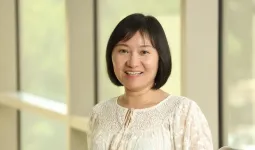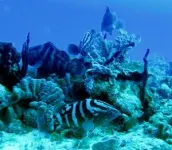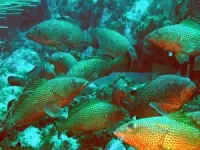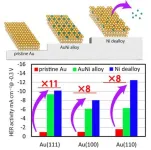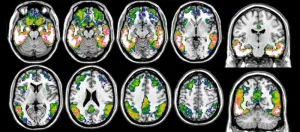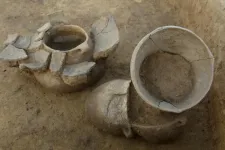(Press-News.org) For all the astonishing things artificial intelligence can do, it has a particular blind spot that one University of Virginia researcher seeks to remedy.
It can’t recognize all shapes.
“Current machine-learning models lack the capability to analyze and quantify the shape of objects presented in images with complex structures and large variations, especially in the context of medical imaging,” said Miaomiao Zhang, an assistant professor in the UVA School of Engineering and Applied Science.
The models are biased toward “seeing” image textures and have limited ability to perceive an object’s global structures, said Zhang, who holds joint appointments in the Charles L. Brown Department of Electrical and Computer Engineering and the Department of Computer Science.
“Given an image of a cat where its skin is replaced with that of an elephant, existing neural networks are susceptible to being deceived and misidentifying the image as an elephant,” Zhang said. “In such cases, the model focuses primarily on local image details derived from intensities or textures rather than recognizing the global shape of the cat as intended.”
This matters to Zhang, who specializes in developing AI for image processing and analysis in medical applications, frequently in collaboration with clinicians at UVA Health.
The AI tool set, including machine learning and deep neural networks, is a critical aid for diagnosing progressive diseases such as heart failure and Alzheimer’s. If AI can’t reliably recognize and quantify the geometric shape changes of heart motions or brain structures from medical images — magnetic resonance imaging, for example — it can’t help doctors precisely detect abnormalities or subtle changes caused by diseases over time.
“There is a critical need in real-world applications for machine-learning tools that can see and understand shape data from images in the way that humans can,” Zhang said.
Zhang’s project, “Deep Neural Networks That Can See Shape From Images: Models, Algorithms and Applications,” aims to create a new family of AI tools that can analyze and quantify shape information from images and use this perspective to improve image analysis and machine learning in general.
“Achieving this goal is crucial to unlock the full potential of AI in medical imaging, enabling more accurate and reliable diagnoses and empowering health care professionals with enhanced insights for improved patient care,” she said.
Scott Acton, chair of the Charles L. Brown Department of Electrical and Computer Engineering, said Zhang’s work is an important contribution in the recent explosion of AI models for health care.
“This proliferation is due to the research community adding structure to an unstructured machine-learning process,” Acton said. “Professor Zhang’s groundbreaking idea comes from a similar spirit. She is adding the ability to see global structure in digital images. As a biomedical image analysis researcher, I can tell you that this advance will unleash new descriptive powers for health research.”
To help address AI’s shortcomings in shape analysis, the National Science Foundation has granted Zhang a prestigious CAREER Award, which funds projects for early-career faculty in recognition of the potential they have demonstrated for leadership in research and education. Zhang was also recently recognized with a National Institutes of Health Trailblazer Research Award and in 2014 earned a Young Scientist Award from the Medical Image Computing and Computer Assisted Intervention Society, in which she is active as a member and an area chair.
The Research
Deep neural networks — a specific machine-learning technique — are algorithms carefully developed to emulate human learning processes. You can think of the algorithms, or mathematical formulations, as the neurons that are learning to recognize, recall and draw meaning from patterns in the data.
Zhang is proposing a new family of deep neural networks with the power to analyze shapes: deep shape-based neural networks, or DSNNs. To achieve this requires a shift in how researchers teach the networks to see and analyze shapes — and it’s not unlike teaching a child new words.
To develop the algorithms, her team will start by teaching the deep networks to analyze deformed variants of simple geometric figures — animals and everyday objects — using toy data sets such as Google’s Quick, Draw!, and adding more complex images as the model gains intelligence. The team will incorporate thousands of MRI and computed tomography images from Zhang’s clinical colleagues at UVA Health and from research databases maintained by Brigham and Women’s Hospital in Boston.
The outcome of this research will have immediate, long-lasting and wide-ranging impacts in the real world beyond medical imaging. Over the five-year project, Ph.D. students in Zhang’s lab will ultimately produce software that can be adapted for myriad uses, such as the processing of satellite images to monitor environmental changes in rivers and other geological features.
The project’s multidisciplinary nature also provides opportunities to attract students and researchers from diverse backgrounds across engineering, mathematics and medicine — and that makes Zhang especially enthusiastic about the project’s educational outreach component, an important element of CAREER Awards.
While the research involves advanced math that engineering students might not have encountered, Zhang plans to integrate her models into UVA courses in ways that are accessible to undergraduate and graduate students. She’s also eager to engage local middle and high school students through workshops and summer research programs to draw more women and students from other groups underrepresented in STEM fields.
AI: A ‘Co-Pilot for Clinicians’
Zhang’s collaboration with UVA Health’s cardiac center provides a unique opportunity to record video of her newly invented deep shape-based neural networks technology being used in medical procedures — for example, during heart surgery to implant a pacemaker.
“I can show potential future researchers how we use all this cool technology to impact a patient’s life and get them excited about the work,” she said.
Image analysis through artificial intelligence is transforming health care, Zhang said, and there’s a critical need to train surgeons in AI basics. UVA has begun to address this, including by inviting Zhang to participate in seminars that provide future surgeon-scientists with essential education in AI technology while emphasizing the importance of its responsible use.
“It’s not in the far future that AI will become a highly effective co-pilot for clinicians to make decisions on diagnosis and treatment plans, even during surgery in real time,” Zhang said. “However, neurosurgeons or cardiac surgeons will need to understand the basic science behind the software they’re using. If the algorithm delivers a false result, they need to identify it.”
As AI stakeholders, surgeons and physicians are indispensable partners in the work Zhang and other UVA Engineering researchers do across multiple disciplines, she said, and there has to be a continuous feedback loop between engineering and medicine.
“Then you create an interconnected and mutually beneficial education system for successive generations of engineers and medical students,” Zhang said. “That’s also a piece that I’m really enthusiastic about contributing to through this CAREER proposal.”
END
CAREER Award: Fixing AI’s blind spot in image analysis
New class of machine learning tools could help doctors better detect heart and brain abnormalities
2023-08-09
ELSE PRESS RELEASES FROM THIS DATE:
The protein protectors of fertility
2023-08-09
Osaka, Japan – You’re likely familiar with RNA, the molecule that plays an important role in protein production and gene expression control. Perhaps you’re less familiar, however, with PIWI-interacting RNA (piRNA), a special type of RNA that protects the genome from mutations. Now, researchers in Japan have shed light on how these critical molecules are formed by the dynamics of several associated proteins in the germline of the fruit fly, Drosophila melanogaster.
In a new study published in the Journal of Cell Biology, researchers from Osaka University have clarified how the proteins Tejas (Tej), Vasa (Vas), and Spindle-E ...
AuNi alloy on Au electrodes for hydrogen evolution reaction: towards a cleaner tomorrow
2023-08-09
In recent years, hydrogen gas has gained momentum as the fuel for a clean and green future. This carbon-neutral fuel source releases huge amounts of energy via combustion in the presence of oxygen with water vapor as the by-product. One of the most popular methods of hydrogen production is the splitting of water into hydrogen and oxygen using electricity.
An electrochemical cell is used to split water, and the hydrogen gas gets released at the negatively charged electrode in hydrogen evolution reaction (HER). Catalysts are used to lower the ...
Sugars in breastmilk could help treat infections, prevent preterm births
2023-08-09
Breastfeeding has long been used as a method to help keep newborns healthy and protected against a variety of diseases. But certain sugars naturally found in breastmilk could also help prevent infections before a baby arrives. Researchers reporting in ACS Central Science have found that these sugars can stop a common prenatal infection in human tissues and pregnant mice. This could someday help avoid preterm births or complications without the need for additional antibiotics.
One of the most common bacteria that can affect pregnancies is Group B streptococcus (GBS). If left untreated, ...
Human scent receptors could help ‘sniff out’ nerve gases in new sensor
2023-08-09
By some estimates, the human nose can detect up to a trillion different smells with its hundreds of scent receptors. But even just catching a quick whiff of certain chemicals known as nerve agents can be lethal, even in tiny amounts. Researchers now reporting in ACS Sensors have developed a sensitive and selective nerve gas sensor using these human scent receptors. It reliably detected a substitute for deadly sarin gas in simulated tests.
Nerve gases are often very potent, requiring highly sensitive sensors to detect them ...
Microplastics found in human heart tissues, both before and after surgical procedures
2023-08-09
Everywhere scientists look for microplastics, they’ve found them — food, water, air and some parts of the human body. But examinations of our innermost organs that aren’t directly exposed to the environment are still limited. Now, in a pilot study of people who underwent heart surgery, researchers in ACS’ Environmental Science & Technology report that they have found microplastics in many heart tissues. They also report evidence suggesting that microplastics were unexpectedly introduced during the procedures.
Microplastics ...
Electric car revolution puts Native communities at risk
2023-08-09
Conditions are ripe for an accelerated transition to electric vehicle (EV) use in the United States. The Biden-Harris administration has set a target that 50 percent of newly purchased cars in 2030 be electric. In addition, the Inflation Reduction Act of 2022 provides significant tax incentives for purchasing electric vehicles and for companies that produce them.
And that is good news for environmental justice (EJ), says Lisa Benjamin, author of a paper called “EVs as EJ?” forthcoming in Harvard Environment Law Review. Benjamin, associate professor of law at Lewis & Clark Law School, details all of the positive impacts of EVs ...
Tau-PET : a window into the future of Alzheimer’s patients
2023-08-09
Alzheimer’s disease, one of the most common neurodegenerative diseases, leads to progressive loss of memory and autonomy. It is characterised by the accumulation of neurotoxic proteins in the brain, namely amyloid plaques and tau tangles. Due to the silent development of pathology over decades, very early diagnosis is of utmost importance to be able to take action as early as possible in the disease process. A team from the University of Geneva (UNIGE) and the Geneva University Hospitals (HUG) has demonstrated ...
New research links early Europeans’ cultural and genetic development over several thousand years
2023-08-09
A new DNA study has nuanced the picture of how different groups intermingled during the European Stone Age, but also how certain groups of people were actually isolated. The study was carried out by researchers at Uppsala University working with an international team of researchers, who produced new genetic data from 56 Central and Eastern European individuals from the Stone Age. The results have been published in the journal Communications Biology.
“Conducting studies like this one requires a broad interdisciplinary discussion. In this study, this discussion has been exceptionally fruitful,” says Tiina Mattila, population geneticist at Uppsala ...
Natural gas odorants associated with consistent pattern of adverse health symptoms
2023-08-09
Odorants are widely used in natural gas for leak detection, however, few studies have examined their potential effects on public health. A new peer-reviewed publication in Current Environmental Health Reports, suggests that some commonly-used natural gas odorants may induce a range of adverse health symptoms at very low concentrations, ranging from headaches to respiratory inflammation and skin rashes.
“Our sense of smell is the first line of defense in detecting gas leaks, but few studies have examined how odorants in gas may adversely affect our health or well-being,” said the review’s lead author, PSE Healthy Energy Senior Scientist Drew Michanowicz. “The ...
Particulate air pollution a growing risk for premature CVD death and disability worldwide
2023-08-09
Research Highlights:
Between 1990 and 2019, the total annual number of premature CVD deaths and years of disability attributable to particulate matter air pollution rose by 31% worldwide.
The increase in deaths was unevenly distributed by sex, with a 43% increase in deaths among men compared to a 28.2% increase among women.
During the nearly 30 years of data reviewed, deaths and disability attributed to outdoor particulate matter pollution rose, while deaths associated with indoor use of solid fuels declined.
Regions ...
LAST 30 PRESS RELEASES:
Bharat Innovates 2026 National Basecamp Showcases India’s Most Promising Deep-Tech Ventures
Here’s what determines whether your income level rises or falls
SCIE indexation achievement: Celebrate with Space: Science & Technology
Children’s Hospital Colorado performs region’s first pediatric heart and liver dual organ transplant
Australian team discover why quantum computers have memory problems over time
What determines the fate of a T cell?
Candida auris: genetic process revealed which could be treatment target for deadly fungal disease
Groundbreaking discovery turns household plastic recycling into anti-cancer medication
Blocking a key inflammatory pathway improves liver structure and vascular function in cirrhosis, study finds
Continuous spread: Raccoon roundworm detected in nine European countries
HKUST Engineering researchers developed a novel photodetector to enhance the performance of on-chip light monitoring
Strategic river sensors could have forewarned of Texas Camp flood disaster
Drone sampling of whale breath reveals first evidence of potentially deadly virus in Arctic
Roman soldiers defending Hadrian’s Wall infected by parasites, study finds
Pinochet’s prisoners were tormented with music but still found solace in it, a new book reveals
Fertility remains high in rural Tanzania despite access to family planning
AI-assisted device can improve autism care access
Kinetic careers
Uncovering how parasitic plants avoid attacking themselves to improve crop resistance
Nanoparticle vaccine strategy could protect against Ebola and other deadly filoviruses
Study finds brain care score can predict risk of stroke across racial groups
Key lung immune cells can intensify allergic reactions
Do hormones explain why women experience more gut pain?
New materials conduct ions in solids as easily as in liquids
Breakthrough of the Year: Renewable energy begins to eclipse fossil fuel-based sources
LLM use is reshaping scientific enterprise by increasing output, reducing quality and more
Introducing LightGen, a chip for ultra-fast, ultra-efficient generative AI
Astronomers see fireworks from violent collisions around nearby star
ACC/AHA issue new guideline on managing congenital heart disease in adults
Cosmic crash caught on camera
[Press-News.org] CAREER Award: Fixing AI’s blind spot in image analysisNew class of machine learning tools could help doctors better detect heart and brain abnormalities
